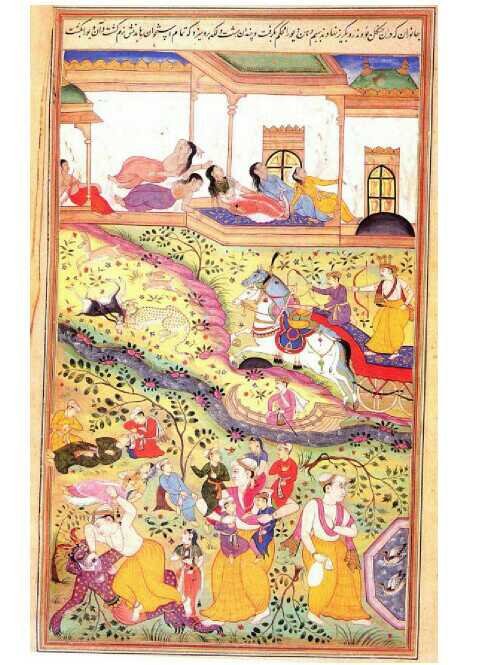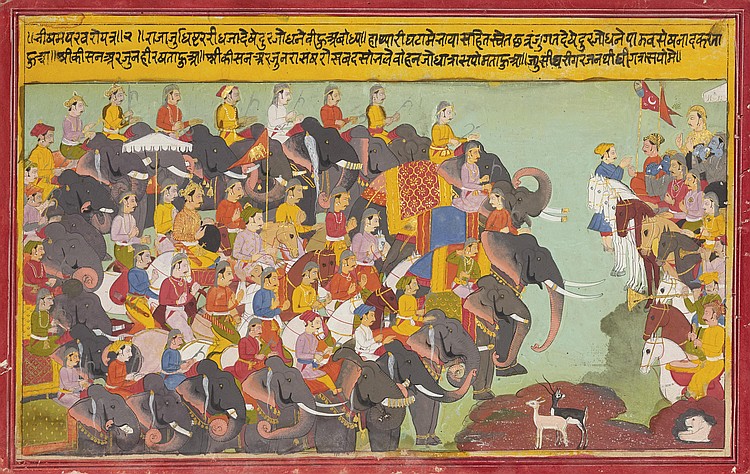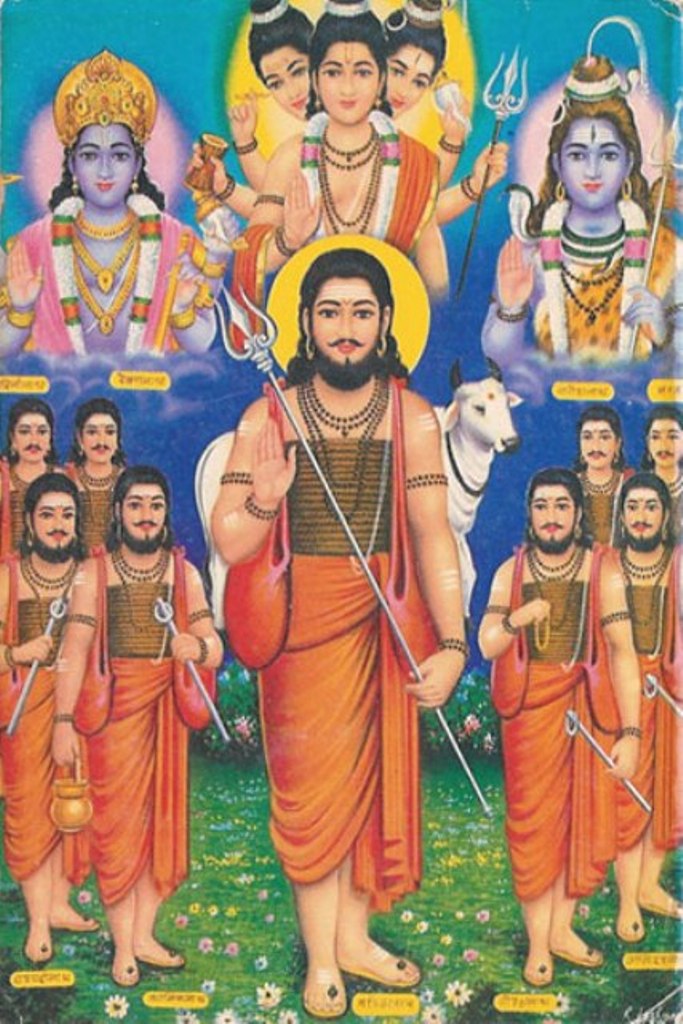|
Pandav Sthan
Pandav Sthan ( Maithili: पांडव स्थान, Romanised: ''Pāṇḍavasthāna'') also known as ''Panr'' is an ancient archaeological site in the Mithila region of the Indian subcontinent. It is related to the epic Mahabharata. It is located at Panr village of the Dalsingsarai block in the Samastipur district of Bihar in India. Presently there is a temple known as ''Pandava Krishna Dham Mandir'' near the site in which the statues of Lord Krishna and the five Pandavas are installed. In historical records, Panr has been mentioned as an ancient and historical city on the Ganges plains of the Mithila region.{{Cite book , last=Mishra , first=Shiva Kumar , url=https://books.google.com/books/about/Educational_Ideas_and_Institutions_in_An.html?id=0iWcAAAAMAAJ#panr%20mithila , title=Educational Ideas and Institutions in Ancient India: From the Earliest Times to 1206 A.D. with Special Reference to Mithilā , date=1998 , publisher=Ramanand Vidya Bhawan , isbn=978-81-85205-71-7 , ... [...More Info...] [...Related Items...] OR: [Wikipedia] [Google] [Baidu] |
Mithila (region)
Mithila (), also known as Tirhut, Tirabhukti and Mithilanchal, is a geographical and cultural region of the Indian subcontinent bounded by the Mahananda River in the east, the Ganges in the south, the Gandaki River in the west and by the foothills of the Himalayas in the north. It comprises certain parts of Bihar and Jharkhand states of India and adjoining districts of the Koshi Province, Bagmati Pradesh and Madhesh Province of Nepal. The native language in Mithila is Maithili language, Maithili, and its speakers are referred to as Maithils. Mithila is commonly used to refer to the Videha Kingdom, as well as to the modern-day territories that fall within the ancient boundaries of Videha. Until the 20th century, Mithila was still ruled in part by the Raj Darbhanga. History In Jainism Mithilā is one of the most significant pilgrimage sites in Jainism. Apart from its association with ''Mahavira'', the 24th Tirthankara, it is also known for its association with ''Mallinatha'', ... [...More Info...] [...Related Items...] OR: [Wikipedia] [Google] [Baidu] |
Patna
Patna (; , ISO 15919, ISO: ''Paṭanā''), historically known as Pataliputra, Pāṭaliputra, is the List of state and union territory capitals in India, capital and largest city of the state of Bihar in India. According to the United Nations, as of 2018, Patna had a population of 2.35 million, making it the List of cities in India by population, 19th largest city in India. Covering and over 2.5 million people, its urban agglomeration is the List of million-plus urban agglomerations in India, 18th largest in India. Patna also serves as the seat of Patna High Court. The Buddhist, Hindu and Jain pilgrimage centres of Vaishali district, Vaishali, Rajgir, Nalanda, Bodh Gaya and Pawapuri are nearby and Patna City is a sacred city for Sikhs as the tenth 10th Sikh Guru, Sikh Guru, Guru Gobind Singh was born here. The modern city of Patna is mainly on the southern bank of the river Ganges. The city also straddles the rivers Son River, Son, Gandak and Punpun River, Punpun. The city ... [...More Info...] [...Related Items...] OR: [Wikipedia] [Google] [Baidu] |
Lakshagriha
Lakshagriha (), also called the House of Lacquer, is a palace made of lacquer featured in the Hindu epic Mahabharata. It is the setting of an assassination plot in the epic, devised by the prince Duryodhana to murder his cousins, the Pandavas, by planning to immolate them while they slept within the palace. Literature Mahabharata Dhritarashtra, the ruler of the Kuru kingdom, designated his nephew and the eldest son of Pandu, Yudhishthira, as the heir-apparent to the throne. Yudhishthira and his four brothers, called the Pandavas, grew popular among the masses, owing to their great deeds and prowess. Threatened by his cousins' fame and stoked by envy, Dhritarashtra's eldest son, Duryodhana, persuaded his father to allow him to plot against them to retain control over the kingdom. Gaining the king's consent, Duryodhana instructed the architect Purochana to build a palace using flammable lacquer, and set it aflame on a designated day to assassinate the sleeping Pandavas and ... [...More Info...] [...Related Items...] OR: [Wikipedia] [Google] [Baidu] |
Duryodhana
Duryodhana (, Help:IPA/Sanskrit, [d̪ʊɾjoːd̪ʱən̪ᵊ], ), also known as Suyodhana, is the primary antagonist in the Hindu epic ''Mahabharata.'' He is the eldest of the Kaurava, Kauravas, the hundred sons of King Dhritarashtra and Queen Gandhari (Mahabharata), Gandhari of Kuru dynasty. Born through a miraculous manner, his birth is accompanied by ill-omens. Duryodhana grows up in Hastinapur, Hastinapura and later becomes its crown prince. Driven by innate selfishness, jealousy, and hostility towards his cousins—the five Pandava brothers—Duryodhana frequently plots against them, aided by his principal allies: his trickster uncle Shakuni, his loyal friend Karna, his devoted brother Dushasana and his blind and indulgent father Dhritarashtra. Duryodhana's envy culminates in the infamous dice game, where he humiliates Draupadi, the queen of the Pandavas. This incident provokes Bhima, the second Pandava, to vow that he will one day smash Duryodhana's thigh. Later, with the he ... [...More Info...] [...Related Items...] OR: [Wikipedia] [Google] [Baidu] |
Kaurava
''Kaurava'' is a Sanskrit term which refers to descendants of Kuru, a legendary king of India who is the ancestor of many of the characters of the epic ''Mahabharata''. Usually, the term is used for the 100 sons of King Dhritarashtra and his wife Gandhari. Duryodhana, Dushasana, Vikarna and Chitrasena are the most popular among the brothers. They also had a sister named Dussala and a half-brother named Yuyutsu. Etymology The term ''Kauravas'' is used in the ''Mahabharata'' with two meanings , *The wider meaning is used to represent all the descendants of Kuru. This meaning, which includes the Pandava brothers, is often used in the earlier parts of popular renditions of the ''Mahabharata''. *The narrower but more common meaning is used to represent the elder line of the descendants of Kuru. This restricts it to the children of King Dhritarashtra, excluding the children of his younger brother, Pandu, whose children form the Pandava line. The rest of this article deals ... [...More Info...] [...Related Items...] OR: [Wikipedia] [Google] [Baidu] |
Lucknow
Lucknow () is the List of state and union territory capitals in India, capital and the largest city of the List of state and union territory capitals in India, Indian state of Uttar Pradesh and it is the administrative headquarters of the eponymous Lucknow district, district and Lucknow division, division. Having a population of 2.8 million as per 2011 census, it is the List of cities in India by population, eleventh most populous city and List of million-plus urban agglomerations in India, the twelfth-most populous urban agglomeration of India. Lucknow has always been a Multiculturalism, multicultural city that flourished as a North Indian cultural and artistic hub, and the seat of power of Nawabs in the 18th and 19th centuries. It continues to be an important centre of governance, administration, education, commerce, aerospace, finance, pharmaceuticals, information technology, design, culture, tourism, music, and poetry. Lucknow, along with Agra and Varanasi, is in the Uttar P ... [...More Info...] [...Related Items...] OR: [Wikipedia] [Google] [Baidu] |
Birbal Sahni Institute Of Palaeosciences
The Birbal Sahni institution of Palaeosciences (BSIP), formerly known as the Birbal Sahni Institute of Palaeobotany, is an autonomous institution established by the Government of India under the Department of Science and Technology. The Birbal Sahni Institute of Palaeosciences is situated in Lucknow, Uttar Pradesh, India. Its primary aim is to integrate the disciplines of plant and earth sciences to carry out palaeobotanical research. The area of Fusion-Science is given actual relevance by the use of modern equipment, computing technology, and well-equipped laboratories staffed by skilled specialists. This enables research on a broad variety of general themes, both practical and fundamental. The targeted goals are being achieved via collaboration at both national and international levels, as well as involvement in numerous research programs. History The Birbal Sahni Institute of Palaeosciences is named after its esteemed founder, Professor Birbal Sahni, a distinguished ... [...More Info...] [...Related Items...] OR: [Wikipedia] [Google] [Baidu] |
Radiocarbon Dating
Radiocarbon dating (also referred to as carbon dating or carbon-14 dating) is a method for Chronological dating, determining the age of an object containing organic material by using the properties of carbon-14, radiocarbon, a radioactive Isotopes of carbon, isotope of carbon. The method was developed in the late 1940s at the University of Chicago by Willard Libby. It is based on the fact that radiocarbon () is constantly being created in the Atmosphere of Earth, Earth's atmosphere by the interaction of cosmic rays with atmospheric nitrogen. The resulting combines with atmospheric oxygen to form radioactive carbon dioxide, which is incorporated into plants by photosynthesis; animals then acquire by eating the plants. When the animal or plant dies, it stops exchanging carbon with its environment, and thereafter the amount of it contains begins to decrease as the undergoes radioactive decay. Measuring the amount of in a sample from a dead plant or animal, such as a piece of w ... [...More Info...] [...Related Items...] OR: [Wikipedia] [Google] [Baidu] |
Natha Sampradaya
Natha, also called Nath (), are a Shaiva sub-tradition within Hinduism in India and Nepal. A medieval movement, it combined ideas from Buddhism, Shaivism, Tantra and Yoga traditions of the Indian subcontinent.Natha: Indian religious sect Encyclopedia Britannica (2007) The Naths have been a confederation of devotees who consider as their first lord or , with varying lists of additional gurus. Of these, the 9th or 10th century |
Brahmi Script
Brahmi ( ; ; ISO 15919, ISO: ''Brāhmī'') is a writing system from ancient India. "Until the late nineteenth century, the script of the Aśokan (non-Kharosthi) inscriptions and its immediate derivatives was referred to by various names such as 'lath' or 'Lat', 'Southern Aśokan', 'Indian Pali', 'Mauryan', and so on. The application to it of the name Brahmi [''sc. lipi''], which stands at the head of the Buddhist and Jaina script lists, was first suggested by T[errien] de Lacouperie, who noted that in the Chinese Buddhist encyclopedia ''Fa yiian chu lin'' the scripts whose names corresponded to the Brahmi and Kharosthi of the ''Lalitavistara'' are described as written from left to right and from right to left, respectively. He therefore suggested that the name Brahmi should refer to the left-to-right 'Indo-Pali' script of the Aśokan pillar inscriptions, and Kharosthi to the right-to-left 'Bactro-Pali' script of the rock inscriptions from the northwest." that appeared as a fully ... [...More Info...] [...Related Items...] OR: [Wikipedia] [Google] [Baidu] |
Nitish Kumar
Nitish Kumar (born 1 March 1951) is an Indian politician who has been serving as the 22nd chief minister of Bihar since 22 February 2015, having previously held the office from 2005 to 2014 and for a short period in 2000. He is Bihar's longest serving chief minister whilst also holding the post for his 9th term. He is the leader of the Janata Dal (United). Previously, Kumar also served as a Union Minister as the Samata Party member. He was member of the Samata Party until 2005 and Janata Dal from 1989 to 1994. Kumar first entered politics as a member of the Janata Dal, becoming an MLA in 1985. A socialist, Kumar founded the Samata Party in 1994 along with George Fernandes. In 1996 he was elected to the Lok Sabha, and served as a Union Minister in the government of Atal Bihari Vajpayee, with his party joining the National Democratic Alliance. In 2003 his party merged into the Janata Dal (United), and Kumar became its leader. In 2005, the NDA won a majority in the Bihar Legislat ... [...More Info...] [...Related Items...] OR: [Wikipedia] [Google] [Baidu] |







